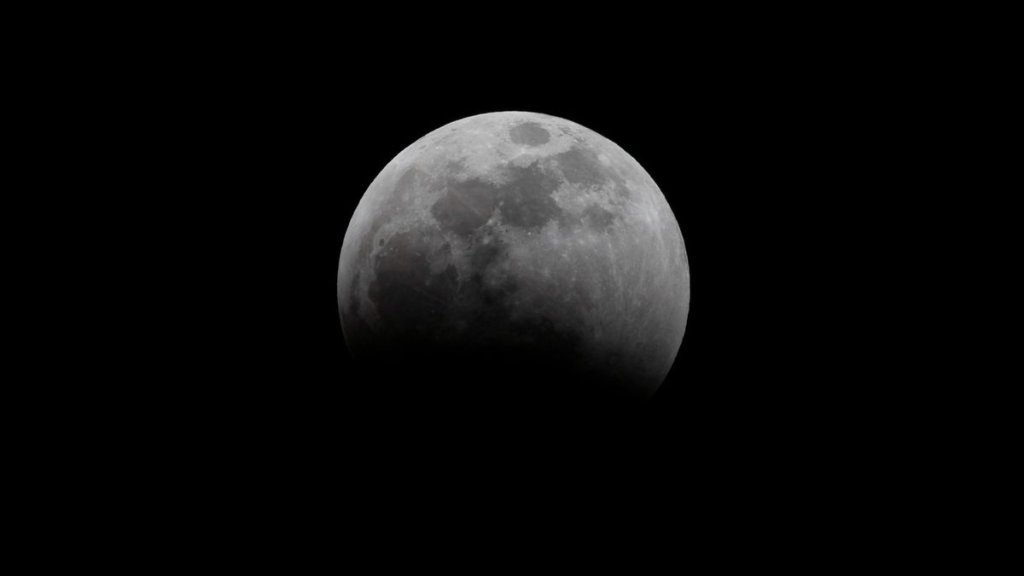
Don’t miss a partial lunar eclipse of October’s Full Hunter’s Moon this week (Image Credit: Space.com)
Earlier this month, an annular eclipse of the sun was visible from Earth, and before October 2023 draws to a close, it will be the moon’s turn to experience an eclipse.
Next weekend, the moon will pass into the shadow of the Earth, triggering a partial lunar eclipse visible in full from Europe, including Russia, Italy, Germany and the UK, and African countries like South Africa, Egypt and Algeria, according to Time and Date.
Beginning on Saturday, Oct. 28, and stretching into Sunday, Oct. 29, the partial lunar will occur during October’s full moon, the Hunter’s Moon. Skywatchers in New York and other U.S. states will only get to see this latter penumbral stage of the Oct. 28 partial eclipse, as during the earlier stages, the moon will be below the horizon. The end of the eclipse will be visible from a few states in the U.S., like New York, Alaska and North Carolina, but not to its full extent.
This is only a partial lunar eclipse because the Earth, the moon, and the sun will not perfectly align. That means that only part of the moon will slip into the darkest part of Earth’s shadow, the umbra.
Related: Lunar eclipses 2023: When, where & how to see them
The beginning of the eclipse sees the moon move into the outer and lighter part of Earth’s shadow, which is known as the penumbra. For eclipse watchers in London, England, the eclipse will start with this penumbral stage at 1801 GMT (1401 EDT) when Earth moves between the moon and the sun, and the shadow of our planet first falls on the lunar disk.


Want to see the moon up close? We recommend the Celestron Astro Fi 102 as the top pick in our best beginner’s telescope guide.
As the Earth moves further over the moon, the darkest inner part of its shadow — the umbra — begins to fall on the lunar disk. On Saturday and again from London, this will begin at 1935 GMT (3:35 p.m. EDT). This is followed by the maximum eclipse, when Earth’s umbra covers a large part of the moon, kicking off at 2014 GMT (1614 EDT) for this eclipse.
The partial eclipse ends when the moon moves out of the umbra, passing back into the penumbra and a second penumbral eclipse stage, occurring at 2052 GMT (4:52 p.m. EDT) on Oct. 28. Finally, the moon moves clear of the penumbra too, signaling the end of the lunar eclipse. This will happen at 2226 GMT (6:26 p.m. EDT).

It is no coincidence that the partial lunar eclipse will happen at the time of the Hunter’s Moon, as lunar eclipses need full moons to proceed. Not every full moon is marked by a lunar eclipse, however, because the moon’s orbital path around Earth has an inclination (tilt) of 5 degrees compared to our planet’s orbital path around the sun. Eclipses only happen when the full moon is close to points at which the orbital paths of the Earth and the moon intersect, called lunar nodes.
No special equipment besides knowledge of the timing of the lunar eclipse and a blanket and comfortable chair is needed to watch this event. Even if you are outside the path of this lunar eclipse, you will still be able to watch the partial lunar eclipse live and for free online at the Time and Date YouTube channel.
If you miss this partial eclipse, the moon will once again pass into the shadow of Earth on Sept. 17, 2024, with this partial lunar eclipse event visible in its full glory from most of Europe and all of North America.
If you are hoping to catch a look at the moon during the partial eclipse (or any other time!), our guides to the best telescopes and best binoculars are a great place to start.
And if you’re looking to snap photos of the moon or the night sky in general, check out our guide on how to photograph the moon, as well as our best cameras for astrophotography and best lenses for astrophotography.
Editor’s Note: If you snap an image of the partial lunar eclipse and would like to share it with Space.com’s readers, send your photo(s), comments, and your name and location to spacephotos@space.com.





